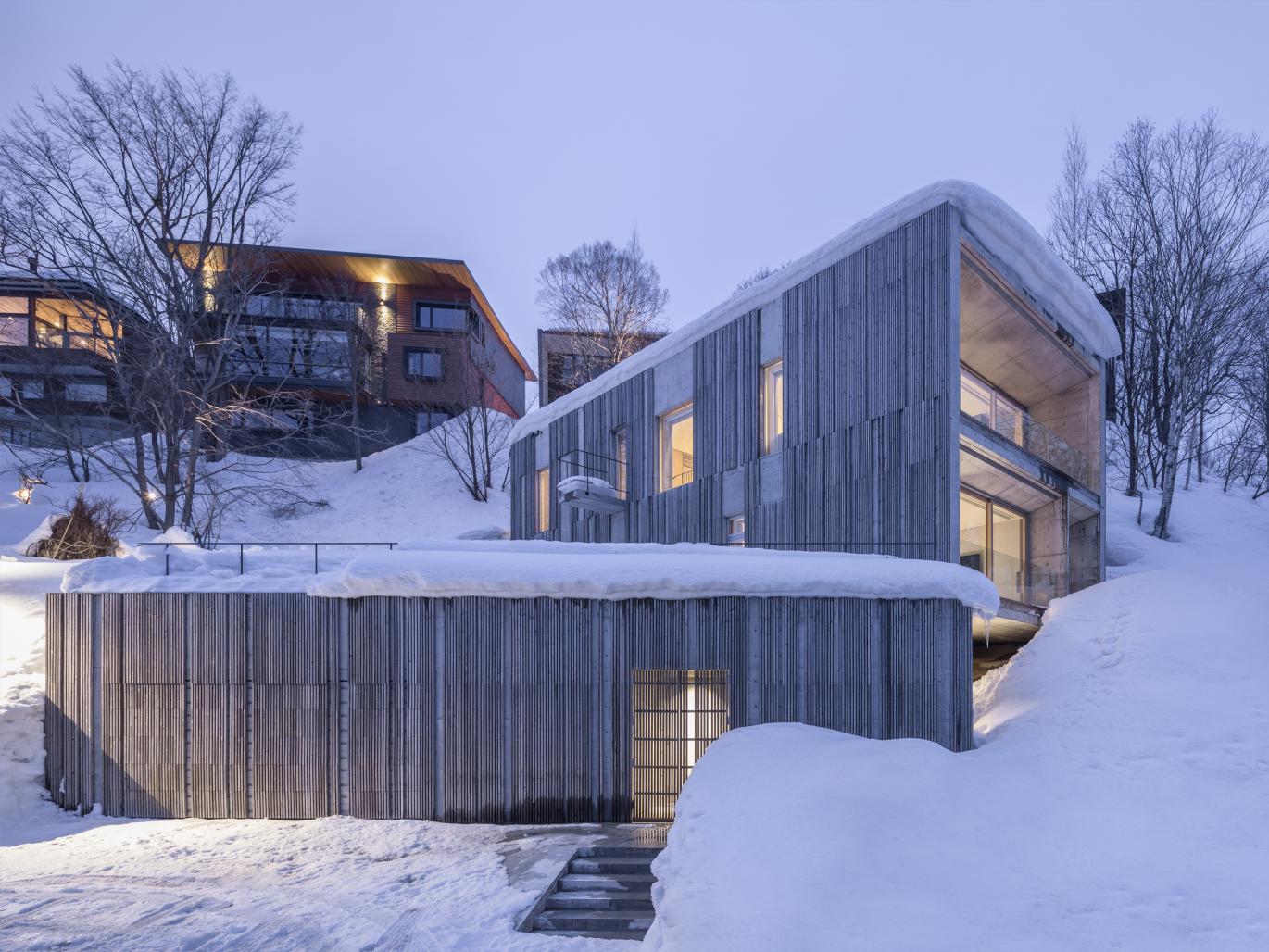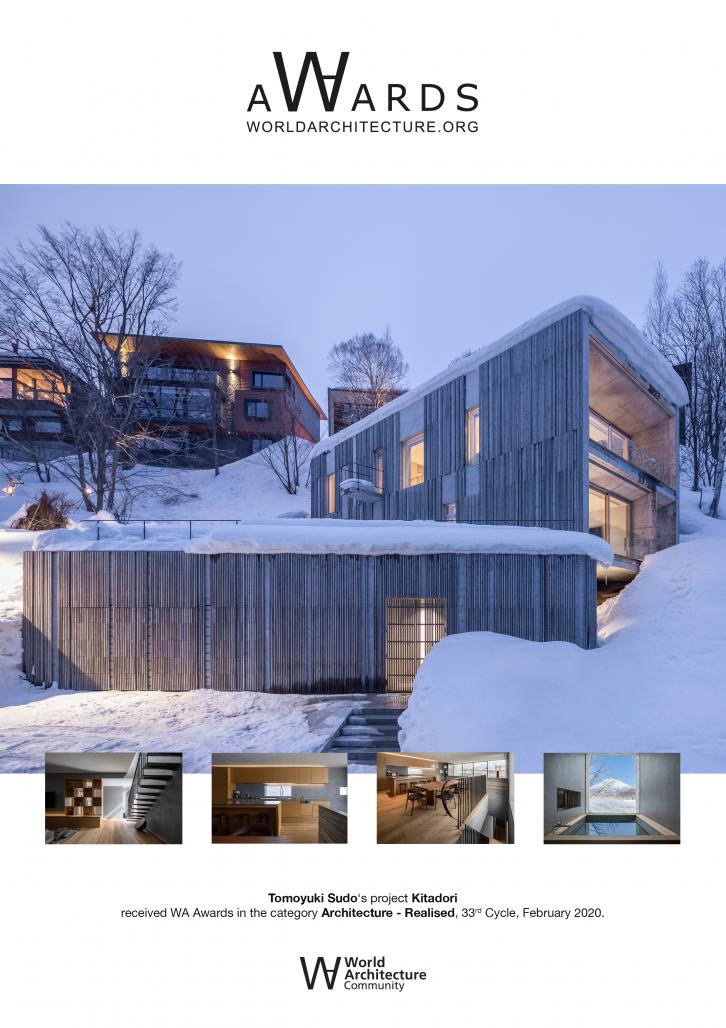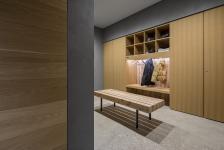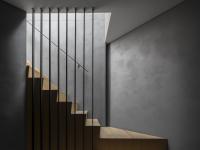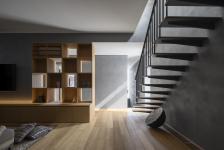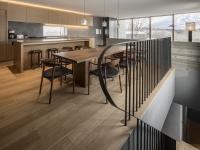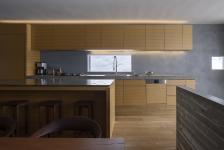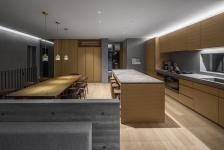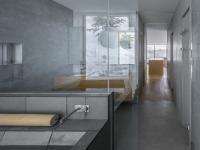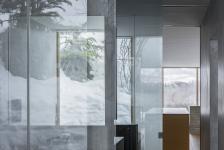At its most fundamental, a dwelling is built for shelter. But can it also inform and inspire? SAAD expands on this discussion with the design of Kitadori. Located in Hokkaido, Kitadori is a three-story house that forms part of the prestigious Escarpment housing estate. Kita means ‘north’, and Dori means ‘bird’ in Japanese. The house was christened as such by the owner to personify a bird adapting seamlessly into the natural landscape in this northern region of Japan.
Houses here conventionally have windows mainly facing the street to collect sunlight. In the process, the beauteous forest landscape in the rear is forgotten. They also ignore the natural relief, which, when considered in the design, not only allows occupants to understand the site’s topographical character but also reduces the house’s environmental impact.
Kitadori’s parti reads as two longitudinal volumes stacked nonchalantly like Lego blocks on the stepped earth. The two-story top block is angled almost perpendicularly to the base, resulting in a generous outdoor balcony on the latter’s roof. The base block is clad with a rhythmic skin of local Hokkaido cedar timber on an off-form concrete shell. The slender, vertical elements echo the lithe lines of surrounding White Birch trees to create a visually attuned dialogue between nature and manmade. The disparate spacing between the timber elements abstracts a poetic amble through the changing sceneries of the open field into forest and forest back to open field. A wood-protecting paint coat penetrates into the timber’s fibers, turning it a silvery grey that blends into the off-white foil of snow.
Entirely wrapped in the timber skin – even the main door – and edged partially into the earth, the base block appears stoic and mysterious. Its homogeneity also draws focus to the house’s formal qualities. The upper block is more open and dynamic, with floor-to-ceiling apertures that face tranquil rice fields and the majestic peaks of Mt. Yotei. Windows in the rear accord occupants alternative forest views.
The first story comprises garage and storage rooms. The staircase cuts diagonally into the space, but as it ascends, traces the upper block’s length so that in moving up and down the house, occupants become aware of the plot’s topographic differences. On the second story is the guest en-suite with a sunken Japanese bathtub that segues into the summer green or winter whites through full-height glazing. From the cloistered media room, a door opens to a burst of sunlight and expanse that one can fully encounter by stepping onto the outdoor terrace. Crowning third story is the open-plan living and dining and master bedroom en suite.
A streamlined, minimalist aesthetic characterizes interiors. Materials are thoughtfully chosen for their tactility and sustainability, and rendered in techniques that tell a story. For instance, local mizunara Japanese oak used for the furniture is cut live-sawn, producing distinct, irregular patterns. Walls are finished in matte paint but given a brushed texture that subtly changes appearance as the lighting quality modulates over the course of the day. Components such as staircase balustrades are detailed in slender proportions, so they appear to float in space and are pleasing to human touch.
Eschewing a consumerist mind set, the house is designed for permanence and usability. A strong eco-friendly ethos supports this. Kitadori faces southeast to maximize sunlight retrieval, and in warmer months, the house can be opened up for breezes to penetrate thoroughly. The use of local timbers minimizes the house’s carbon footprint. In particular, the use of donan-sugi (cedar timber from South Hokkaido) supports afforestation efforts. This aligns with our desire to respect the land and propagate an architectural approach
2015
2016
Type: Villa
Status: Completed
Structure: RC
Site area: 1053.70㎡
Total floor area: 333.18㎡
Building site: Hokkaido, Japan
Structure design: structured environment
Contractor: SUDO Construction Co.,Ltd.
Photo: Kenji Masunaga
Tomoyuki Sudo
Momoyo Yamawaki
Mimi Okuhara
Kitadori by Tomoyuki Sudo in Japan won the WA Award Cycle 33. Please find below the WA Award poster for this project.
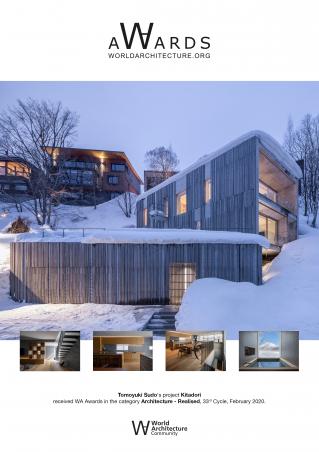
Downloaded 6 times.
Favorited 1 times
